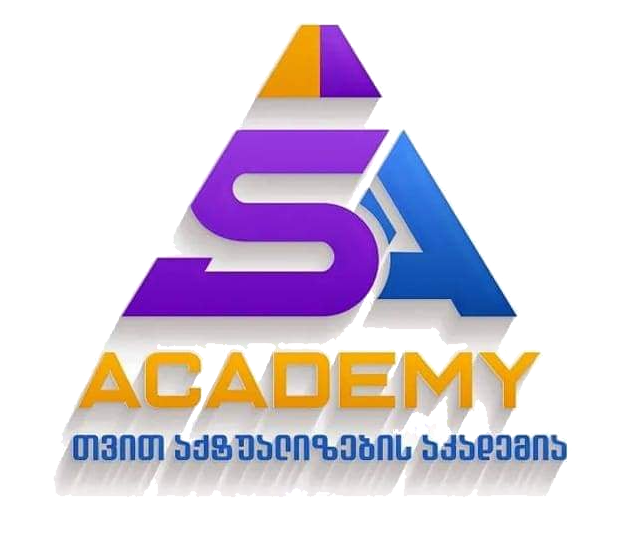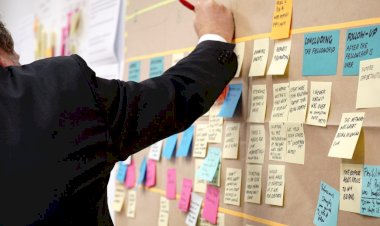Strategic Management in Education as a Key Element for Learners’ and Their Instructors’ Self-Actualization

Strategic Management in Education as a Key Element for Learners’ and Their Instructors’ Self-Actualization
Author: Nana Aleksidze (Ph.D)
The 21-st century world is more demanding for changes and restructuring. The demands on educational institutions are focused on the schools and higher educational institutions to find the ways to meet the needs of students’ effective learning and teachers’ productive work. Students are no longer seen and perceived as only learners who follow the directions passively without expressing their opinions and asking the questions “why” and “how”, but they are active, curious, demanding and full of questions. In order to maintain the effective management of the classroom and the whole educational process the need to analyze, evaluate and implement appropriate strategies and principles of the educational management aspects became indispensable. Strategic management in education is one of most effective and appropriate way and tool to satisfy students interest, their needs and make fundamental bases to give profound answers to the students questions beginning with : why and how?
Key Words: Educational Management; Strategic Management; Self-actualization; Educational Leadership; Classroom Management.
Introduction
Contemporary world pushed the managers of education to focus on the major and globally significant themes of educational management. There are themes which are the most challenging issues in all countries in the field of education, but their solutions often depend more on local circumstances rather than on improving ready-made guide-lines and regulations. During the last decade education systems have been undergoing a long process of restructuring from a model of educational management that was deeply rooted in the past to a strategic management model that is focused on the future (Medina & Encomienda 2013). The 21st century world is more demanding for changes and restructuring. The demands on educational institutions are focused on the schools and higher educational institutions to find the ways to meet the needs of students’ effective learning and teachers’ productive work.
Teachers as managers should address to apply two necessary factors while managing their classrooms:
- Diagnosis: the process of assessing the situation and highlighting the main issues
- Evaluation: determining the most appropriate solution to the problem( Bush, 2002, p. 30)
Students are no longer seen and perceived as only learners who follow the directions passively without expressing their opinions and without asking the questions “why” and “how”, but they are active, curious, demanding and full of questions. This challenge of contemporary image of the 21st century learner motivated teachers and educators to maintain the perspective of the managerial approaches and create the management model which will fit to the demands and challenges of the contemporary educational development and the learners. In order to maintain the effective management of the classroom and the whole educational process the need to analyze, evaluate and implement appropriate strategies and principles of the educational management aspects became indispensable. Strategic management in education is one of most effective and appropriate way and tool to satisfy students’ interests, their needs and to make fundamental bases to give profound answers to the students’ questions beginning with : why and how?
Problem Statement
Today’s classrooms are different from what they were 30 years ago, the climate and the atmosphere there now also face challenges of being or becoming safe and acceptable, motivating and interesting, entertaining and academic, all together create that kind of classroom environment which ensures and facilitates students’ and their instructors’ active and joyful engagement in the classroom life and educational process, making them empowered and self-actualized. As students became involved and engaged in the management process with planning and operating the classroom activities and classroom life, they become motivated and responsible, realizing that their voices are heard and their opinions are understood. These aspects of motivation and encouragement will foster students’ being active and actualized, empowered to seek, identify and maintain the interesting and useful strategies of classroom management under the teachers’ guidance.
Strategic Management in Education
Strategic thinking involves the integration of several types of mental skills and techniques, as well as certain habits and attitudes, in the context of defining the problem to be solved and then solving them. Good strategic management is essential for long-term educational process. It involves defining different educational strategies and choosing the most relevant one among many, it guarantees the flexible operation and strategy implementation tailored to the students’ needs, considering the existed environmental, cultural and other essential peculiarities of the learners in the classroom. Through maintaining the strategic management aspects in educational process teachers and students collaboratively express the opinion regarding their learning with clear objectives, creating meaningful plans as to how these objectives will be achieved, aligning classroom activities to support those objectives, and allocating the resources needed to achieve them (White, 2004).
Appropriate implementation of strategic management in education is a key skill for instructors and students which involves not only identifying and developing the right educational, managerial and classroom activity strategies in complex but also creating the needed and tailored, safe and acceptable, student-centered, flexible and constantly changing classroom environment based on successfully implemented chosen strategies. Adopting strategic management aspects in teaching and learning comprises the mix of analytical and management development skills as well as strong leadership skills for maintaining team building concept, aligning classroom activity options and fostering internal and external , intra and inter relationship and communication skills. One of the most demanding and important skills among other needed ones within the frames of strategic management implementation is analytical skill. Highly developed analytical skill helps instructors to act like transformative leaders in their classrooms, leading their team/students and the whole educational process. While speaking about the analytical skills, we cannot avoid mentioning the good strategic thinking, critical thinking and problem solving abilities. Well-developed analytical skills help teachers to identify problems and challenges, choosing the relevant strategies and techniques, implement the activities and create the satisfying and acceptable classroom environment. Strategic management can only be successful if it starts with a clear and honest understanding of the internal and external factors that will determine success - today and in the future (White, 2004).
Applying strategic management approach in education maintains sustainable improvement and is considered as a key aim of educational management. As any field and any process in those fields experience changes and challenges of being innovative and flexible, creative and great problem-solver also are considered to be the most needed and desirable abilities among others. The classroom life and the process there which is associated with teaching and learning should be at the heart of any call for changes or innovation, as ultimately it is what the teaching staff deliver throughout the educational process which makes the effective difference in the learning outcomes of students. According to Riley, Heneyeld and Harris (2002 cited in Medina & Encomienda 2013), there are two main central factors in educational management referring managerial strategies and sustainable improvements:
- The strategic management of learning;
- Effective educational leadership.
According to Elmore (2002 cited in Medina & Encomienda 2013), the central aim of these processes has to be the achievement of significant improvement in learning for all students. The chosen approach of implementing the strategic management aspects and applying strategic management in education, facilitate and foster fresh management thinking and practices form the basis of that kind of improvement in the education which aims:
- To actualize learners and instructors;
- To maintain effective transformative leadership strategies;
- To apply and implement challenging and relevant strategic management in education.
According to Pozner (2000 cited in Medina & Encomienda 2013), this involves acknowledging that successful educational transformation stems from integrated strategic management in order to create acceptable and safe classroom environment oriented to learners ‘satisfaction.
Integrated strategic management comprises all the needed and useful teaching and learning, general educational and managerial, leadership and psychological aspects and strategies combined in the classroom management model.
Strategic Management in Learning
Strategic management of learning is oriented to find the ways and approaches of learning, to consider the different styles of learning and the peculiarities of the learners, of their abilities and needed skills. Each student on his/her stages of age and development has his/her own way of learning. Strategic management is oriented to seek and identify relevant strategies and make objective analyses of the chosen approaches and the forecasted outcomes along with the ongoing process and activities. Student-centered approach focuses on students’ needs and their actualization. This kind of approach is considered to be one of the most important aspect of strategic management implementation in education and classroom management. Effective student-centered teachers while planning classroom activities always consider not only the whole scheme of the activity beginning from the goal of the activity to the forecasted outcomes, but also the correct form of the language and communication and take into consideration their students’ age, interests, cultural background, social status, personal abilities, the rate of their self-confidence and the psychological and pedagogical aspects of the learner-oriented teaching. The social and intercommunicative functions of the student-centered education defines the main direction of the students’ development as individuals who through the process of self-actualization can reach their desired self-realization. These aspects of education: social, cultural, self-developmental, according to Piaget (1977), emphasize the self-initiative ability of the students and fosters the process of their self-actualization.
Strategic management in learning outlines the following educational aspects:
- Identifying the different styles of learning and individual peculiarities of the learners;
- Choosing and maintaining appropriate approaches and strategies in combination with other techniques of teaching and learning for facilitating students’ active participation and self-actualization;
- Creating relevant atmosphere and environment acceptable and safe for instructors to be productive and for students to be attentive;
- Implementation of the adopted approaches and team-building techniques collaboratively and cooperatively.
According to Medina & Encomienda (2013) only deep-seated change in educational working practices will bring the education system up to the optimum level for progress towards the strategic objectives that currently prove so challenging.
The basic characteristics and components of this strategic management reflects the following:
- a. The core nature of pedagogy - comprising flexibility of adopting approaches, being responsive and considering teaching, learning, managerial and psychological aspects.
- Skills for dealing with complexity - being actively involved in the process , being responsive and having relevant reaction towards the challenges and actual agendas in the live educational process and having motivation of developing more and necessary skills.
- Teamwork - collaborative working in the educational context is based on processes that facilitate shared understanding, and promote joint planning, action and reflection regarding what needs doing and how it needs to be done.
- Openness to learning and innovation - this involves breaking down underlying barriers such as fear and inertia and fostering clarity of goals whilst highlighting the need for change and improvement.
- e. Advice and guidance - support for teaching staff, to enable them to address issues and identify specific solutions to challenges that arise in the teaching process, is vital.
- An organizational culture bound together by a clear vision for the future - the aim here is to look to the future and the challenges it may bring by clarifying objectives, generating consensus, and identifying goals.
- Strategic systemic interventions - strategic planning refers to the combined processes of design, development and ongoing maintenance and monitoring of an action or set of actions, that links the aims and competences with demands and opportunities.
Effective Leadership in Education
As for the leadership aspects in education within the frame of strategic management, this is also the factor which expresses the opportunities of creating team-building spirit and encouragement to students to have freedom of choice. Contemporary educational system is being restructured in many aspects and in many parts of the world. Governments began seeking the ways and methods to improve the quality of educational outputs to increase competitiveness in the global contexts. Highly educated workforce is seen to be the major way of promoting flexibility in many areas of the developed world. Education became priority not only for the developed but also for developing countries. As they all seek to retain their strong economies by investing in education to prepare competent work force and professionals. The process of restructuring is defined as taking steps for decentralization of power to schools or local administrative bodies to enhance the satisfaction of local community needs. By taking the concrete steps to improving the solutions will make the relevant responses to the Global problems. Educational system has taken the approach of restructuring by imposing the huge expectations on educational establishment which have to lead to a significant change in the nature and scales of accountability, creating and designing the strategies to sustain working frameworks and develop leadership and management skills that are needed at many points in the organizations. In the process of policy making teacher acts like manager and encourages students to be active in participating in the policy-making process. They should pass several stages of effective planning and designing (Bush, 2002, p. 45):
- Creating contributive conditions of the effective learning and learner-oriented teaching
- To ensure the clear and explicit, well planned links, either direct or indirect between the classroom activities related to the actual problems of and supporting learning and teaching.
- To make strong association between knowledge and skills of the classroom members, learners and employ, select and utilize professional development programmes to ensure the needed outcomes.
- Teachers should provide conditions to make well defined and acceptable links between students; capacities and their self-management abilities and learning outcomes.
Being a student-centered teacher, means to be an effective leader leading the student-centered classroom management and ensuring the conditions for active learning. Student-centered teachers take the new set of leadership beliefs and competences that can transform the old and traditional, teacher-centered approach and all its attached constraints into the new student-centered approach, facilitates educational changes, develops an appropriate classroom environment for students and for teacher to work, to learn and to develop effectively. Student-centered teacher while managing the classroom acts like a manager and a transformative leader who employs all the needed strategies for establishing the relevant rules and procedure to organize the classroom, team, groups, monitor the whole learning process and pace of the development of the ongoing classroom events (Evertson and Harris 1990 as cited in Allen, 2010).
Proactive classroom management strategies focus on implementing strategies emphasizing how students should behave in the classroom, the expectations in the classroom, and how to make the classroom as structured and predictable as possible to avoid disruptive behaviors. Class-wide strategies are implemented with all students within the class and address the needs of most students in terms of behavior, while individualized strategies might be needed for a small number of students who will not respond appropriately to class-wide strategies (Prevetion.org, 2014, retrieved in 2020).
Conclusion
Speaking about self-actualization, environmental, socio-cultural and psychological aspects of the classroom life, we should necessarily mention the whole concept of self-actualization and facultative teaching. Humanistic conception in education is oriented to be focused on a person, individual and in our case on the learners. In order to meet the students’ needs and to assist them be active and autonomous, giving them chance of being free in choices, empowered and motivated, humanistic conception is that approach in education which maintains the development of those possibilities. To achieve that position of fulfillment they need to have all the practical knowledge and skills needed for that purpose. Maslow (1970, pp.57-78) strongly considers that healthy person primarily is motivated by the instinctoid basic needs to be developed as human and then to actualize one’s fullest potentials and capacities to become autonomous, more independent, more free and functional and more self-actualized. Humans like learners should be treated and respected as humans who are granted with human potential, who have their needs and demands either physical or psychological or even ‘metaneeds’ (Maslow, 1970, p. Xiii). Teaching can foster the process of self-actualization and self-growth and help learners to become ‘Fully Functioning Humans’ (Rogers, 1969). Effective teachers are leaders of their class and managers of the classroom, they need to have all the traits what the leaders are considered to possess, according to Crawford (2002, p. 26), these traits are:
- Sense of responsibility
- Concern for task completion
- Energy
- Persistence
- Risk-taking
- Originality
- Self-confidence
- Capacity to handle stress
- Capacity to influence
- Capacity to co-ordinate the efforts of others in the achievements of purpose
Transformative leader as a teacher, always motivates the learners, makes new communication, tries to get the learners achieve independence in the learning process, has vision of the classroom development, maintains value creation, acts to be more communicative with students, parents and peers and fosters decision making ability in him/her self and in learners, maintains equality between the learners from the gender, ability and cultural perspective.
Classroom management strategies need to be planned, be thoughtful, and in line with curriculum fidelity. It is important to prioritize curriculum fidelity when selecting classroom management strategies. Some important points to keep in mind when creating a classroom management plan or classroom management contract with students (Prevetion.org, 2014, retrieved in 2020):
- Involve students in all aspects of creating the classroom management plan.
- Create no more than five rules or class norms – Keep things as simple as possible.
If you create too many rules students will feel overwhelmed by the classroom management plan. Look for rules that cover behaviors that could interfere with the learning and engagement of your students. Creating a classroom management plan should be a short, rather quick activity meant to set the tone for the rest of your time together. Always state rules or classroom norms positively and be as brief and to the point as possible. Rules that work well in most situations would be:
- Respect yourself, your classmates, and your teachers.
- Raise your hand before speaking or leaving your seat.
- Keep your hands, feet, and materials to yourself.
- Listen, follow directions, and ask questions when needed.
- Be positive.
While some classroom management strategies focus more on setting clear rules and some focus more on transitions, the strategies should not change how the lesson is taught. Classroom management strategies should add organization for the students and classroom, but not change the content of the lessons or the fidelity of the curriculum. It is important for all providers to deliver the curriculum with the highest degree of fidelity as possible.
It is important for students to know what is acceptable and unacceptable in the classroom as well as what the expectations are. By allowing students input on developing the classroom management plan, they are invested in following the rules, but should they break a rule, they know what the consequences are.
Effective classroom management is necessary for all teachers and facilitators. Classroom management involves all aspects of what is going on in the classroom while a lesson is being taught. Not only does classroom management include how the teacher or facilitator delivers the curriculum, but also how the students interact with the teacher and with others in the classroom, and extends into the classroom environment in which students learn as well.
Students cannot learn in chaos. Classroom management includes elements of classroom discipline, but focuses more on creating a peaceful learning environment that is comfortable, organized, engaging, and respectful for both the teacher and the students.
The advantage of maintaining integrated strategic management in education and in classroom management gives chance and real opportunity to instructors and also to the students create the flexible, goal-oriented, student-centered model of the classroom management where all the needed approaches and educational aspect will be integrated which will maintain concrete strategy for successful educational management in global and in local context.
Being strategically active, involved and flexible mean being in the constant process of self-actualization.
Reference
Allen, K.P. (2010). Classroom management, bullying and teacher practices. The Professional Educator, 34 (1). Retrieved May 10, 2019 from http://files.eric.ed.gov/fulltext/EJ988197.pdf
Bush, T. & Bell, L. (2002). The Principles and Practice of Educational Management. London: Paul Chapman Publishing.
Crawford, M., Kydd, L., & Riches, C. (2002). Leadership and Teams in Educational Management. Buckingham: Open University Press.
Maslow, A.H. (1970). Motivation and Personality. New York: Harper & Row Publishers.
Medina, F., & Encomienda, H. (2013). Strategic management as key to improve the quality of education. Procedia-social and behavioral science. Vo. 81. pp. 270-274
Piaget, J. (1977). The Essential Piaget. Gruber, H.E. & Voneche, J.J.(Eds.). New York: Basic Books.
Rogers, C. (1969). Freedom to Learn. Columbus, OH, US: Merril.
White, C. (2004). Strategic Management. Macmillan.1st edition
Prevention .org. (2014). Classroom Management Strategies. Classroom Management. Recourse Guide. Prevention First. www. Prevetion.org. File:///C:/Users/Nanaa/Desktop/2020%20IRCELT/classroom%20manement%20strate












